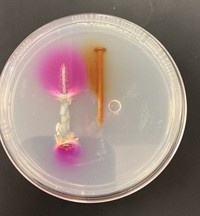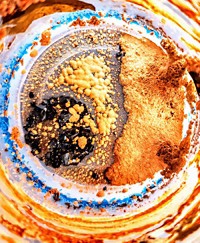Advertisement
Grab your lab coat. Let's get started
Welcome!
Welcome!
Create an account below to get 6 C&EN articles per month, receive newsletters and more - all free.
It seems this is your first time logging in online. Please enter the following information to continue.
As an ACS member you automatically get access to this site. All we need is few more details to create your reading experience.
Not you? Sign in with a different account.
Not you? Sign in with a different account.
ERROR 1
ERROR 1
ERROR 2
ERROR 2
ERROR 2
ERROR 2
ERROR 2
Password and Confirm password must match.
If you have an ACS member number, please enter it here so we can link this account to your membership. (optional)
ERROR 2
ACS values your privacy. By submitting your information, you are gaining access to C&EN and subscribing to our weekly newsletter. We use the information you provide to make your reading experience better, and we will never sell your data to third party members.
Materials
Another Name For Slime?
February 14, 2011
| A version of this story appeared in
Volume 89, Issue 7
I was prompted to comment on the letter by Leiming Li, entitled “Polymers ... or Slime” because the experiment that uses white glue and borax to produce a cross-linked polymer is often used in middle school science classrooms to teach students about polymers (C&EN, Jan. 10, page 3). In my experience, however, the final product is not slime but an elastomer.
For example, in the eighth-grade physical science class that I help teach as a RESEED volunteer (www.reseed-sv.org), we ask the students to add 20 mL of a saturated solution of borax (sodium perborate) to 5 mL of Elmer’s glue (polyvinyl acetate) in a small cup and stir with a wooden tongue depressor. After a few minutes, the cross-linked polymer forms a rubberlike mass at the end of the wooden stick. Students then remove the material, squeeze out the excess liquid, and rub it between their palms to form a round “rubber” ball, which they can then bounce off the floor.
Some teachers call this experiment “Rubber from Glue,” but we call it “Glue Ball Chemistry” because this hands-on activity is accompanied by an audiovisual presentation that discusses polymers and cross-linking as well as the chemistry of this multistep process. It’s an entertaining way to introduce students to polymer science.
Joseph A. Castellano
San Jose, Calif.





Join the conversation
Contact the reporter
Submit a Letter to the Editor for publication
Engage with us on Twitter